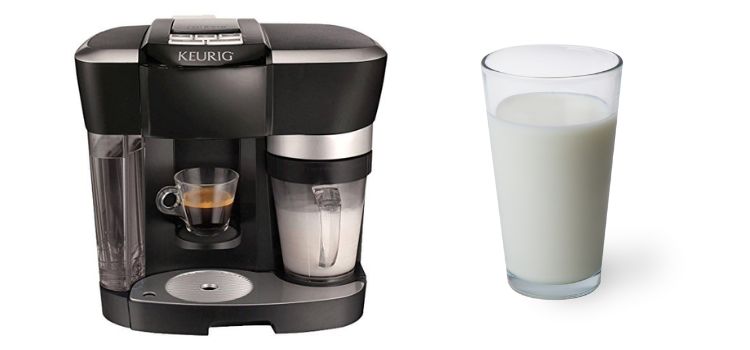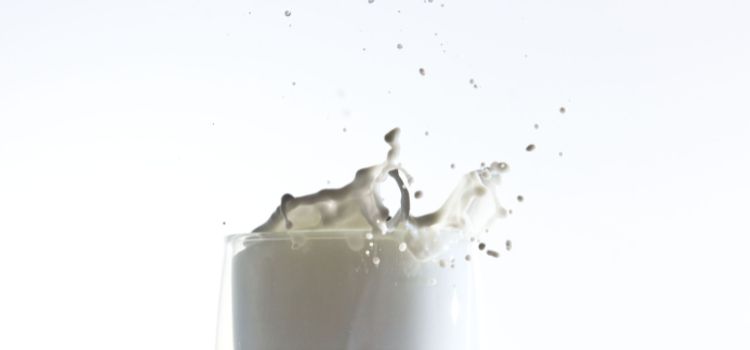As an Amazon Associate, I earn from qualifying purchases

Keurig machines have become a staple in many kitchens, celebrated for their ability to deliver a quick and effortless coffee fix. As these machines cater to the fast-paced lifestyles of many, a common curiosity arises: can you put milk in a Keurig? While the idea of a one-step latte or cappuccino sounds enticing, it’s essential to understand the implications of using milk in a Keurig machine and explore alternative methods for achieving that creamy coffee experience.
To comprehend the issues surrounding milk usage in Keurig machines, it’s crucial to first understand how these machines operate. Keurig brewers are designed specifically for water-based beverages.
The process involves heating water, which is then forced through a coffee pod to produce a variety of drinks, from coffee to tea and even hot cocoa. The simplicity and speed of this mechanism hinge on using water, with the machine’s internal design and technology built around this liquid.
The manufacturer’s instructions emphasize using only water due to the machine’s sensitivity. Keurig systems rely on a precise flow of liquid that can be disrupted by any viscosity changes, such as those introduced by milk, which can lead to technical difficulties or even damage.
Potential Issues with Putting Milk in a Keurig
Important Points on Using Milk in a Keurig Machine
- Performance Impact: Using milk can significantly affect the performance and functionality of your Keurig.
- Residue Build-up: Milk is thicker than water and contains proteins and sugars that can leave residue inside the machine.
- Clogging Issues: This residue can lead to clogging, hindering the machine’s brewing ability or causing a complete breakdown.
- Warranty Concerns: Introducing milk may void the machine’s warranty, as manufacturers recommend using only water.
- Repair Costs: Repairs needed due to milk usage may not be covered under warranty, leading to unexpected expenses.
- Protect Your Investment: To extend the longevity of your Keurig, it’s best to follow guidelines and avoid using milk.
Alternative Methods for Making Milk-Based Drinks

Here are some alternative methods for making milk-based drinks with your Keurig:
- Separate Milk Frother or Steamer: Use a device to heat and froth milk to your preferred consistency, which you can then add to your brewed coffee or espresso for a homemade latte or cappuccino.
- Manual Preparation: Brew a cup of coffee with your Keurig and mix in frothed or steamed milk afterward. This keeps your machine free of milk residue while still providing a creamy beverage.
- Compatible Pods: Some brands offer pods designed for milk-based drinks that include milk-like powder. When brewed with water, these pods create a creamy texture similar to milk, giving you a comparable experience without affecting your machine’s health.
Impact on Machine Performance
Using milk in a Keurig can have adverse effects on the machine’s performance. The internal components of a Keurig are designed to handle water, and the introduction of milk can cause clogs and buildup that interfere with the brewing process. Residues from milk can harden, obstructing the flow of liquid and potentially leading to leaks or overflow.
Moreover, the maintenance required to counteract these issues becomes more extensive. Regular cleaning and descaling are necessary to prevent blockages, but the inclusion of milk adds a layer of complexity that can be difficult to manage.
Cleaning Challenges
Cleaning a Keurig after milk exposure can be challenging. Milk residues are notorious for sticking to surfaces, and if not thoroughly cleaned, they can promote bacterial growth and spoil over time. This not only affects your machine’s performance but also poses hygiene concerns.
If milk is accidentally used, it’s important to immediately clean the machine. This involves running multiple cycles with water to flush out any milk remnants, followed by a thorough descaling process. Regular maintenance and vigilance are key to ensuring the machine remains in optimal working condition.
User Experiences and Testimonials
Many users who have experimented with milk in their Keurigs report mixed results. Some found that short-term use caused no immediate issues, while others experienced clogging and required extensive cleaning. The consensus among most users is that while it’s possible to use milk occasionally without disastrous effects, the risks often outweigh the benefits.
For many, the hassle of cleaning and the potential for damage make it impractical, prompting them to explore alternative methods like those mentioned earlier. Users who have adopted milk frothers or compatible pods generally report greater satisfaction, citing ease of use and consistent results as their primary reasons.
Conclusion
In conclusion, while the idea of using milk directly in a Keurig machine may seem convenient, the potential challenges and risks make it advisable to steer clear of this practice. From clogging issues to warranty concerns, putting milk in a Keurig can compromise the machine’s performance and longevity.
By exploring alternative methods, such as using a milk frother or compatible pods, coffee enthusiasts can enjoy creamy, milk-based drinks without jeopardizing their beloved brewer. Embrace these alternatives to maintain your Keurig’s efficiency and continue savoring your favorite beverages without the worry of unnecessary complications.
As an Amazon Associate, I earn from qualifying purchases